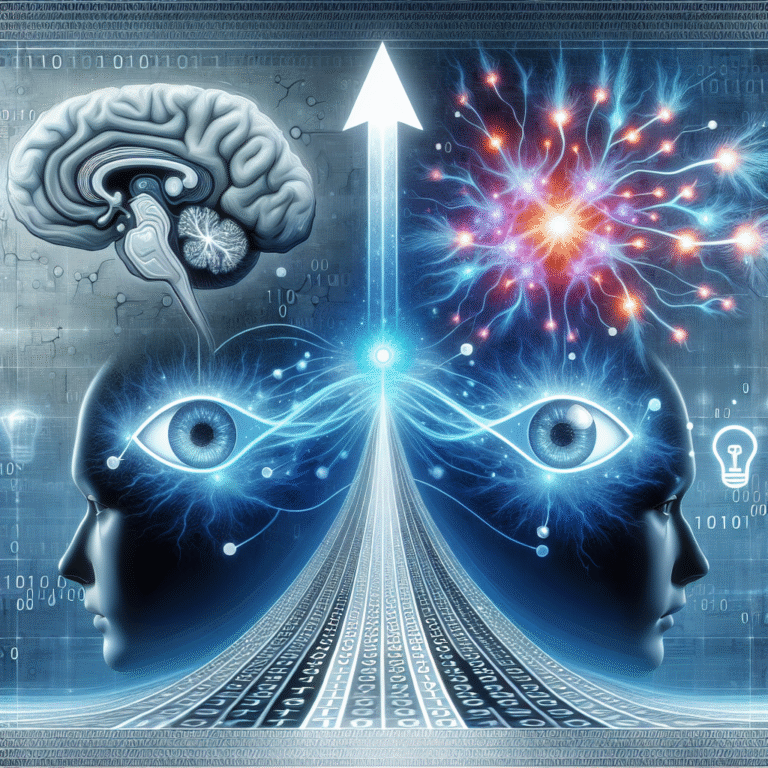Introduction
Imagine a world where we can see the brain’s inner workings in real-time—where mental disorders, cognitive functions, and even emotions can be observed almost as clearly as a heartbeat on a monitor. This vision is not far from reality, thanks to groundbreaking innovations in functional MRI (fMRI) technology. As we stand on the brink of a new era in neuroscience, understanding "The Future of Brain Mapping: Innovations in Functional MRI Technology" is essential not only for scientists but for society as a whole. By harnessing cutting-edge advancements, we can unlock hidden mysteries about the brain and transform how we approach mental health, learning, and creativity.
What is Functional MRI Technology?
A Primer on fMRI
Functional MRI is a non-invasive imaging technique that measures and maps brain activity by detecting changes in blood flow. When a brain region is active, it consumes more oxygen, prompting an increase in blood flow to that area. This hemodynamic response is what fMRI captures, providing insights into brain function.

Figure 1: Basic representation of how functional MRI captures brain activity.
Evolution of fMRI Technology
The journey of fMRI began in the early 1990s, but since then, it has gone through substantial transformations. Initial iterations were limited in spatial and temporal resolution, but modern advancements have made significant strides. Today, high-definition fMRI can pinpoint brain activity with remarkable accuracy.
Innovations Shaping the Future of Brain Mapping
1. Improved Spatial and Temporal Resolution
Innovative technologies like multi-band imaging allow for greater spatial and temporal resolution in fMRI scans. This capability enables researchers to identify specific neural networks in real time.
Case Study: Enhanced Brain Activity Detection
A 2022 study at Stanford University employed multi-band imaging to explore the brain’s response to language processing. Researchers were able to observe the intricacies of the language network with unprecedented detail, paving the way for tailored interventions for language disorders.
| Feature | Standard fMRI | Multi-Band fMRI |
|---|---|---|
| Spatial Resolution | 3mm | 1mm |
| Temporal Resolution (Hz) | 1 | 2-5 |
2. Integration with Machine Learning
The future of brain mapping will undoubtedly include the integration of machine learning algorithms. These algorithms can analyze complex datasets, identifying patterns that human analysts might miss.
Case Study: Predictive Models for Mental Health
A project at MIT developed a machine learning model that predicts depression by analyzing fMRI data. The model demonstrated a 85% accuracy rate in identifying individuals at risk, showcasing how advanced fMRI techniques can inform preventative measures for mental health.
3. Whole-Brain Imaging Techniques
Future innovations will involve whole-brain imaging techniques that provide a comprehensive view of brain functions. These advances promise to marry multiple imaging modalities, such as combining fMRI with EEG (Electroencephalography).
Case Study: Combining fMRI with EEG
A recent collaboration between Yale University and a tech startup successfully integrated fMRI and EEG data to study sensory processing. The researchers found that this combined approach improved understanding of neural oscillations linked to cognitive processing.
Real-World Applications of fMRI Innovations
Personalized Medicine
The incorporation of fMRI technology into personalized medicine can revolutionize treatment plans, especially for mental health disorders.
Case Study: Tailored Therapy for PTSD
A groundbreaking study used fMRI to tailor psychotherapy to veterans suffering from PTSD. By identifying specific brain activity patterns, therapists could personalize intervention strategies, significantly improving treatment outcomes.
Brain-Computer Interfaces (BCIs)
Innovations in fMRI will play an integral role in developing BCIs that can translate thoughts into actions, offering new hope for individuals with mobility impairments.
Case Study: The Neurobridge Project
In a demonstration supported by the University of Pittsburgh, participants could control a robotic arm solely using their brain activity monitored via fMRI. This innovation highlights the potential for fMRI technology to merge human cognition with mechanical mobility.
Challenges and Limitations
Despite its potential, several challenges persist in the field of fMRI technology. High costs, accessibility issues, and the need for extensive training present hurdles that the industry must overcome.
1. High Costs of Equipment
Advanced fMRI machines are prohibitively expensive, limiting access to top-tier research facilities. This can create disparities in research opportunities across institutions.
2. Expertise Required for Analysis
While machine learning can assist in data analysis, human expertise remains crucial. There’s a growing need for professionals skilled in both neuroscience and data analytics to interpret results effectively.
The Role of Collaboration and Interdisciplinary Efforts
Fostering collaboration between fields—ranging from neuroscience to engineering—will propel us into the future of brain mapping. Interdisciplinary efforts are leading to innovative solutions that can tackle complex issues within the brain.
1. Neuroscience and Robotics
Combining expertise from both fields can lead to advanced rehabilitation techniques for stroke patients, integrating fMRI insights with robotic assistance.
2. Partnerships with Tech Companies
Collaboration with tech companies specializing in AI and machine learning can streamline the integration of those technologies within fMRI research, enhancing data interpretation and speeding up discoveries.
Conclusion
As we navigate the complex landscape of brain mapping, innovations in functional MRI technology are indeed paving the way for future discoveries that will change our understanding of the human mind. With advanced imaging techniques, the integration of machine learning, and interdisciplinary collaboration, the potential applications of fMRI technology are limitless. By investing in this transformative technology, researchers and practitioners can unlock new frontiers in mental health treatment, education, and even creativity. The future is bright, and the journey into the depths of the human brain has just begun.
FAQs
1. What is fMRI, and how does it work?
Functional MRI (fMRI) is an imaging technique that measures brain activity by detecting changes in blood flow. When a region of the brain is more active, it requires more oxygen, leading to an increase in blood flow, which fMRI can visualize.
2. What innovations are enhancing fMRI technology?
Innovations include improved spatial and temporal resolution, machine learning integration, and whole-brain imaging techniques, which collectively enhance the accuracy and applicability of functional MRI.
3. How can fMRI be used in personalized medicine?
Functional MRI can help design tailored treatment plans by providing insights into specific brain activities associated with mental health disorders.
4. Are there any limitations to fMRI technology?
Yes, challenges like high costs, accessibility issues, and the need for specialist training can limit the broader application of fMRI technology.
5. What is the significance of interdisciplinary collaboration in fMRI research?
Combining expertise from various fields such as neuroscience, engineering, and AI can lead to innovative solutions and accelerate the pace of discoveries in functional MRI technology.
By investing in these technologies today, we can ensure that we are not just passing through the corridors of neuroscience but actively reshaping our understanding of what it means to think, feel, and experience the world. The future of brain mapping is not just about innovation—it’s a journey toward a more profound comprehension of our very selves.















